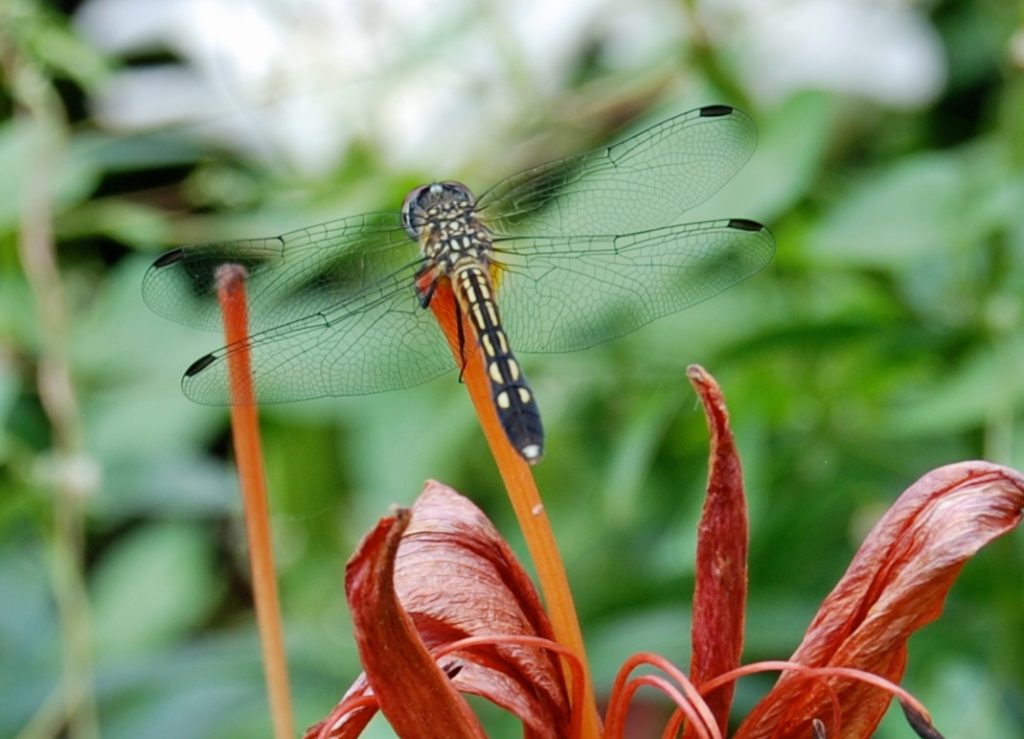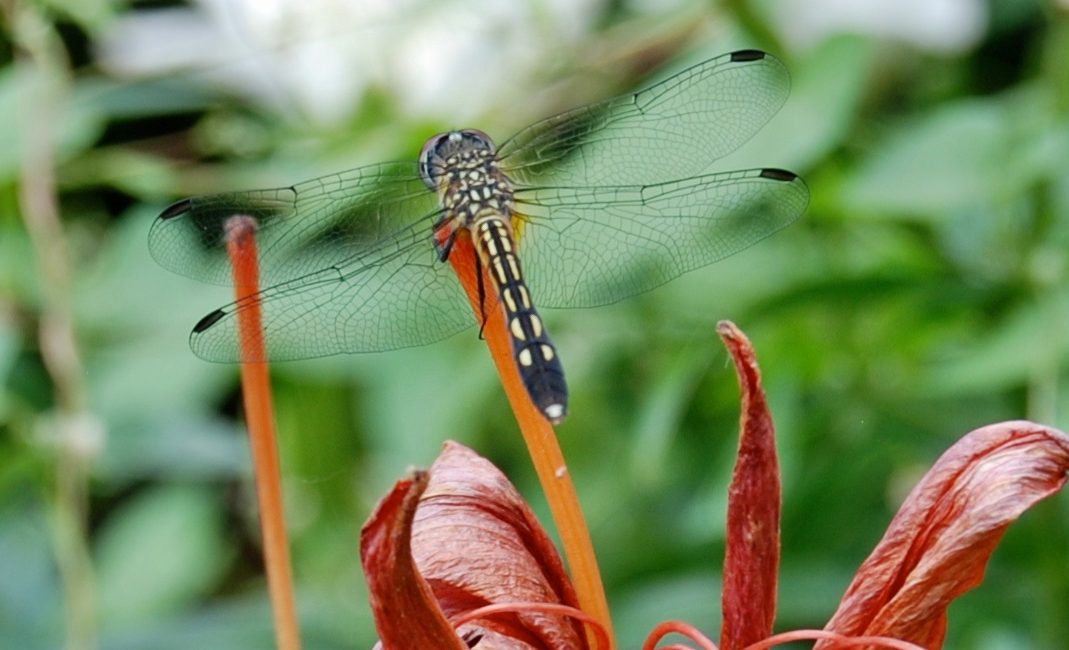Commentary By Anita Martin
Did you know many years ago, some dragonflies got as big as a small red-tailed hawk?
If you’re thinking, “Yikes!” or “Holy guacamole!” you’re not alone. That’s the same reaction I and others had upon hearing this information from Robert Bohanan on August 30 at the Jefferson County Korth Park Pavilion.
Bohanan spoke at the final presentation in the 2023 family education series hosted by the Rock Lake Improvement Association. Now retired from UW Madison, the educator has worked a lot with urban ecology and fresh water ecology over the years. As a member of the Upper Sugar River Watershed Association Board, he has participated in research on the Badger Mill Creek and also conducted dragonfly monitoring training for citizen science volunteers in Wisconsin.
After a brief introduction, the ecologist reflected on the incredibly rich forms of life on earth and the abundant diversity.
Historically, dragonflies have been part of folklore for hundreds of years, especially in Asian poetry where they represent good luck. Conversely in one myth from England, they’re referred to as “devil’s darning needles,” and kids were told if they were naughty, a dragonfly would come and sew their mouth shut. https://www.icysedgwick.com/dragonfly-folklore/
An estimated 350 to 450 species of dragonflies and damsel flies exist, many of which make Wisconsin their home. This summer, Bohanan and his associates found 57 species of dragonflies and damsel flies.
The insects are classified according to such characteristics as overall color, patterns on their wings, orientation of their wings, stripes or spots, the color of their abdomen, and the color of their eyes. They just saw a Great Blue Skimmer dragonfly for the first time in Dane County, he enthused.
One species which is particularly striking and rather unforgettable is the “emeralds group.”
“In Wisconsin, we have an endangered species of dragonflies,” the speaker explained. “The Hine’s emerald,” which has very specific habitat requirements, namely certain types of sedges and springs.
What’s the difference between dragonflies and damsel flies? Dragonflies have larger eyes, which tend to wrap around almost like sunglasses. While both have four wings, two pairs, the former has a more robust, thicker abdomen. Additionally, dragonflies always hold their wings parallel to the ground, he detailed, whereas damselflies often fold their wings together.
Certain types of dragonflies begin to swarm or group together starting in August or early September. At least three species summering in Wisconsin are known to migrate south as the weather gets cooler, heading to Florida, Texas, Tennessee, Kentucky, and Virginia. They fly as many as 60 or 70 miles a day.
In April, those will be some of the first dragonfly species we see flying here in Wisconsin, he told attendees. “Like certain blue butterflies, they need lupine,” he said.
It’s a relatively common misconception that dragonflies bite people, when it reality, they do not.
When it comes to insect behavior, some species of dragonflies will perch, particularly blue darners and darners, on sedge; some if you hold up your finger.
One of Bohanan’s favorite dragonflies is the Calico Pennant variety, which he saw a lot when in Tennessee recently but not so much in our state. While giving a talk once, he said, a Calico Pennant landed on his leg.
Who eats dragonflies as food? “Big dragonflies will eat small dragonflies,” said Bohanan, who tends to look at dragonflies as small, medium, and large. Additionally, birds such as grackles and marsh, nesting birds consume these insects. “Red-winged blackbirds are one of the main predators on the adult dragonflies.” Dragonfly naiads spend four or five years of their lives in water, where they may be fed upon by ducks and other wildlife.
Interestingly, darner dragonflies themselves are voracious predators, and will even feed on small fish and tadpoles.
To make a pond more attractive to dragonflies, he recommends planting some sedges and bull rushes.
For fabulous photos and more information on dragonflies, go to https://uppersugar.starchapter.com/images/downloads/Dragonfly_Monitoring/upload_dragonfly_ecology_and_behavior_bohanan2020.pdf .
Anita Martin is a longtime freelance journalist whose work has appeared in such publications as the Waterloo/Marshall Courier, The Madison Times, Agri-View, Dane County Lifestyles (formerly 50 Plus Lifestyles newsmagazine), Verona Press and Wisconsin Woman magazine, covering such topics as health and wellness, and women’s and multicultural issues. More recently, she has developed interest in such topics as environmental issues, avian influenza and other zoonotic diseases, and public health.

File photo/Fort Atkinson Online staff.
This post has already been read 1597 times!
